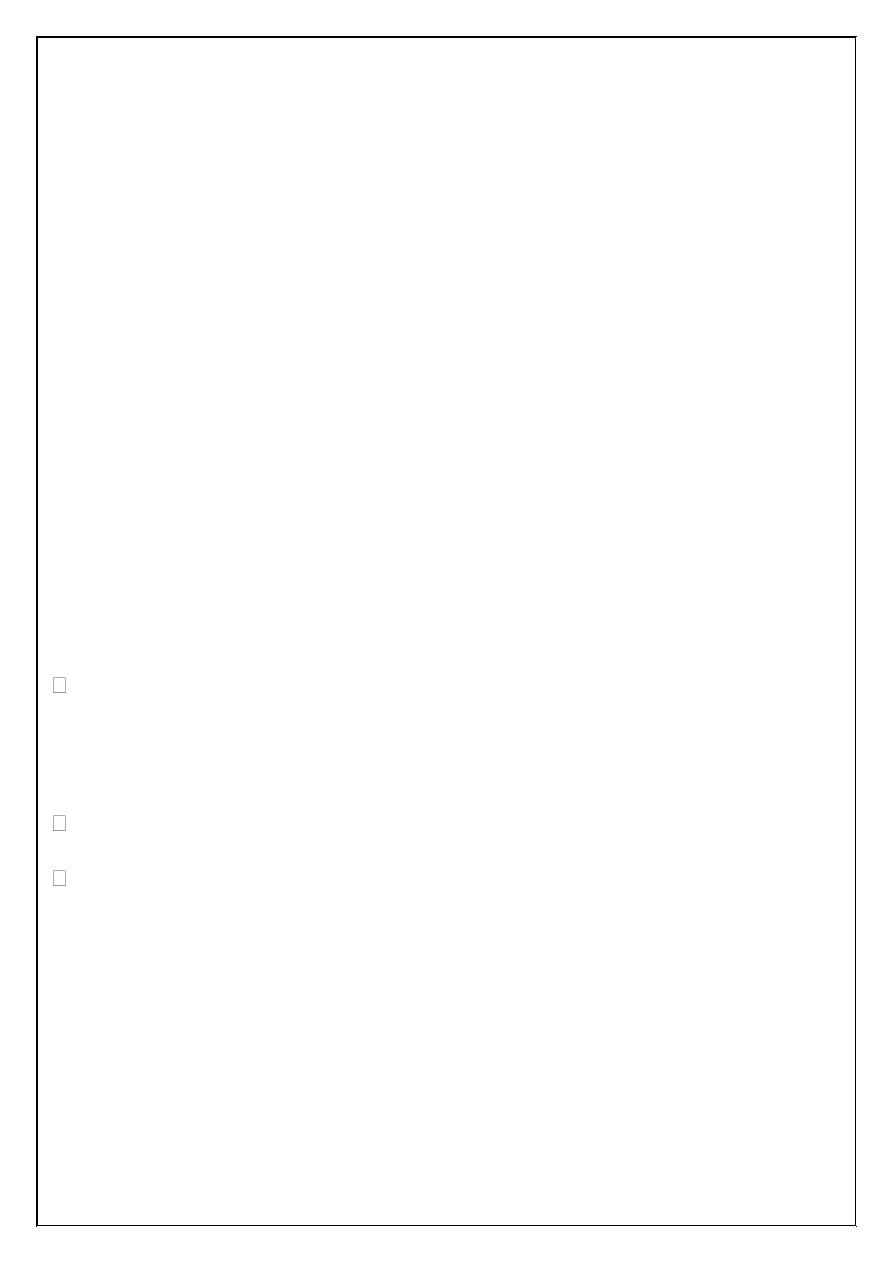
Pediatrics
NEUROLOGY
1
L.2 Dr.Roua Al yaseen
Seizures in Childhood
Seizure (convulsion): is a paroxysmal, time-limited change in motor activity
and/or behavior that results from abnormal electrical activity in the brain.
It is either focal or generalized. Focal seizures may be characterized by motor or
sensory symptoms such as paresthesias or pain localized to a specific area.
Epilepsy : is a recurrent seizures . It is either idiopathic or secondary to
underlying disorders.
CLASSIFICATION OF SEIZURES
1- Partial seizures:
a-
Simple partial (consciousness retained)
Motor
Sensory
Autonomic
Psychic
b-
Complex partial (consciousness impaired)
Simple partial, followed by impaired consciousness
Consciousness impaired at onset
c-
Partial seizures with secondary generalization
2- Generalized seizures:
Absences
Typical(petit mal)
Atypical
Generalized tonic-clonic
Tonic (increased tone or rigidity)
Clonic (rhythmic muscle contraction & relaxation)
Myoclonic (shock like contraction of groups of muscles)
Atonic (flaccidity or lack of movment during convulsion)
Infantile spasms
3- Unclassified seizures

Pediatrics
NEUROLOGY
2
Typical absence (petit mal) seizures
- It is characterized by a sudden cessation of motor activity or speech with a blank
facial expression and flickering of the eyelids.
- It is uncommon before age 5 yr & more prevalent in girls
- never associated with an aura
- persist for 30 sec.& can occurs several times per day
- not associated with a postictal state & patient return to normal activity
immediatly after seizure.
This seizure precipitate by hyperventilation or any stress conditions.
The EEG shows a typical 3/sec spike and generalized wave discharge.
The drug of choice is ethosuximide or valproic acid .
Generalized Tonic-Clonic seizure:
It may be associated with an aura. Patients suddenly lose consciousness, their
eyes roll back, tonic contractions of body musculature, with cyanosis& apnea.
This followed by rhythmic clonic contractions alternating with relaxation of all
muscle groups . During the seizure, children may bite their tongue with loss of
sphincter control. This attack persists for a few minutes. Postictally, child pass
in a deep sleep for 30min-2hr.
Idiopathic seizure
It means the cause of a generalized seizure cannot be identify.
Infantile spasms (West syndrome)
It is begin between the ages of 4 and 8 mon.
Etiology
Infantile spasms are classified into two groups:
1-cryptogenic(primary) : The child has an uneventful pregnancy and birth
history with normal developmental milestones before the onset of seizures. brain
CT and MRI scans are normal. 10-20% of infantile spasms are cryptogenic.
2-symptomatic(secondary):
are related directly to several prenatal, perinatal,
and postnatal factors.
*Prenatal and perinatal factors include:
- hypoxic-ischemic encephalopathy
-congenital infections

Pediatrics
NEUROLOGY
3
-inborn errors of metabolism
-neurocutaneous syndromes such as tuberous sclerosis
-congenital malformation of the brain
-prematurity.
*
Postnatal conditions include:
- CNS infections
- head trauma (especially subdural hematoma)
- intraventricular hemorrhage
Clinical manifestations:
It is characterized by brief symmetric contractions of the neck, trunk, and
extremities. There are three types of infantile spasms:
1-Flexor: occur in clusters and consist of sudden flexion of the neck, arms, and
legs onto the trunk.
2-extensor : extension of the trunk and extremities and are the least common
form of infantile spasm.
3-Mixed : consisting of flexion in some clusters and extension in others, is the
most common type of infantile spasm.
These clusters persist for minutes & can occurs during sleep or immediately on
awakening.
Investigations:
EEG showing the charactristic finding called hypsarrhythmia, which consists of
a high-voltage, bilaterally asynchronous, slow-wave spikes.
Treatment :
The preferred drug is Adrenocorticotropic hormone (ACTH), initial dose 20
unit/day i.m injection for 2wk., if no response the dosage is increased to 40u/day
for additional 4wk.
*Ulternative drugs: oral prednisone 2mg/kg/day, Vigabatrin & clonazepam.
ACTH act by inhibit the secretion of corticotropin-releasing hormone (CRH) by
a feedback mechanism.
Response occurs in 70% of patients.
Prognosis :infants with cryptogenic type have a good prognosis, wherease those
with symptomatic type have 80-90% risk of mental retardation.

Pediatrics
NEUROLOGY
4
Treatment of seizures
1-Treatment of the underlying causes.
2-Drug therapy:
In a previously healthy child with the 1st afebrile convulsion , negative family
history, normal physical examination and EEG, NO need for long term
anticonvulsant therapy.
While those with recurrent seizures or neurologic dysfunction, anticonvulsant
therapy should be maintained.
*Important points on anticonvulsant drugs :
A-selection of drug depend on the type of seizure & the age of the child.
B-should not use polytherapy only in rare cases with intractable seizure unresponse
to single drug, because risk of toxicity & drug interaction.
C-for how long use drug?
For 2yr, then if no fit, stop drug with gradual withdrawal because abrupt
withdrawal may cause recurrent seizure or status epilepticus.
These drugs include:
*phenytoin, phenobarbital(luminal) use for Generalized tonic-clonic &
Carbamazepine(Tegretol) use for partial seizures
-The common side effects of phenytoin include Hirsutism, gum hypertrophy, ataxia,
skin rash, Stevens-Johnson sydrome, nystagmus, nausea, vomiting, drowsiness,
coarsening facial features.
-Phenobarbital side effects are Hyperactivity, irritability, Stevens-Johnson
syndrome, depression of cognitive function.
*Valproic acid(Depakine) used for generalized seizure, partial,absence,myoclonic.
Side effects : Nausea, vomiting, , weight gain, alopecia, hepatotoxicity.
*Ethosuximide : in absence petit mal seizure.
*Clonazepam (Rivotril): absence, myoclonic,& Partial seizures.
3-Ketogenic diet: This treatment considered for the management of intractable
seizures. This diet contain restricted amount of carbohydrate & protein, with large
amount of fat.
4- Surgery: considered for children with intractable seizures unresponsive to
multiple anticonvulsants. This surgery done for epileptogenic area which localized
by EEG & neuroimages .-For most children with epilepsy, restriction of physical
activity is unnecessary except bathing and swimming which need supervision.

Pediatrics
NEUROLOGY
5
STATUS EPILEPTICUS
is defined as continuous seizure activity or recurrent seizure activity without
regaining of consciousness lasting for >5 min.
Refractory S.E. that has failed to respond to therapy, usually with at least 2
medications.
causes include
:
new-onset epilepsy of any type,
drug with drawal in patients on antiepileptics,
drug intoxication,
hypoglycemia, electrolyte imbalance (hypocalcemia,
hyponatremia,hypomagnesemia), acute head trauma,
encephalitis, meningitis, postinfectious encephalitis
ischemic stroke,
intracranial hemorrhage,
inborn errors of metabolism,
brain tumors, or any other disorder that can cause an ordinary epilepsy.
Inv.
Laboratory studies include: serum glucose, sodium, calcium, or other
electrolytes, blood and spinal fluid cultures, toxic screens, and tests for inborn
errors of metabolism. Antiepileptic drug levels need to be determined if the
patient is already on an antiepileptic.
EEG is helpful in identifying the type of S.E
Neuroimaging needs to be considered after the child has been stabilized.
Treatment . S.E. a medical emergency that is better managed in the ICU
because it requires initial and continuous attention to securing Airway,
Breathing, and Circulation with continuous monitoring of vital signs
(including ECG) with attention to the systemic Cxs because some develop
multiorgan failure, as well as determination and management of the
underlying etiology (e.g. hypoglycemia).

Pediatrics
NEUROLOGY
6
Antiepileptic drugs are usually given parenterally in following sequential
steps:-
1. Benzodiazepines
Diazepam IV 0.3 mg/kg). If intravenous access is not available; use
intranasal lorazepam, rectal diazepam, or IM/intranasal/buccal Midazolam.
2. Phenytoin (or fosphenytoin) IV, loading dose 15-20 mg/kg . A level is
usually taken 2 hr later to ensure achievement of therapeutic concentration &
accordingly the maintenance dose 5 mg/24 hr can be started either soon or
after 6 hr.
3. Phenobarbital IV loading dose in neonates is usually 20 mg/kg, but in
infants and children the dose is 5-10 mg/kg (to avoid respiratory depression),
the dose can be repeated if there is no adequate response, then 5mg/kg
maintenance.
Note: After the second or third medication is given, the patient may need to be
intubated.
4. Valproate IV loading 25 mg/kg, maintenance 30-60 mg/kg/24 hr. It also
can be given as a third-line medication (instead of phenobarbital).
5. For Refractory S.E., IV bolus of midazolam, propofol, pentobarbital, or
thiopental are used with maintenance of corresponding continuous
intravenous drip. Subsequent boluses and adjustment of the rate of infusion
are usually made depending on the clinical and EEG response.
Occasionally, inhalational anesthetics (especially isoflorane) are useful.
